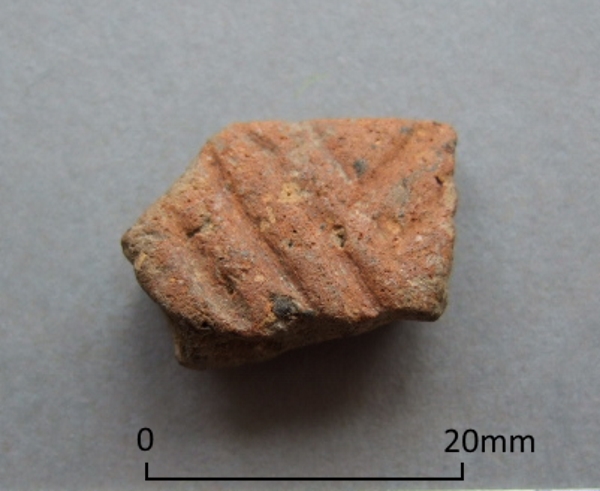
Today’s Image for VM_365 is of a small scrap of Late Neolithic pottery from 1976 excavation of the ring ditch of one of the ceremonial enclosures at Lord of the Manor, Ramsgate.
The sherd is a rim fragment from a tub-shaped vessel with a small-diameter. The exterior of the rim is decorated with incised grooves, the inner edge of the rim has a distinctive bevel, similar to the rims of other examples of this type of pottery. The typical decoration of the sherd with a pattern of grooves in the surface, provides the name that has been given to this ceramic tradition; Grooved Ware.
Before flat based grooved ware vessels began to manufactured, all Early and Middle Neolithic pottery in this country was made with round bases. Grooved Ware is believed to have been first used in the Orkneys, spreading southward across Britain and seems to represent the only truly ‘homegrown’ tradition in the entire history of British ceramics.
The style of decoration on this sherd, coupled with the beveled rim, places the sherd into the Durrington Walls style, which was current during the main building phases at Stonehenge and is dated to c.2800-2300 BC
To date the tiny sherd pictured here seems to the best example of Grooved Ware archaeologists have recovered on the Isle of Thanet. Although it is small, the sherd is a valuable hint that there may be more evidence of this important period of settlement to discover in the future.
The image and information for today’s VM_365 post were kindly provided by a guest curator, ceramic specialist Mr Nigel Macpherson-Grant
In 2007 a group of potters experimented with manufacturing Grooved Ware vessels, follow this link to the Prehistoric Ceramics Research Group website article on the process.